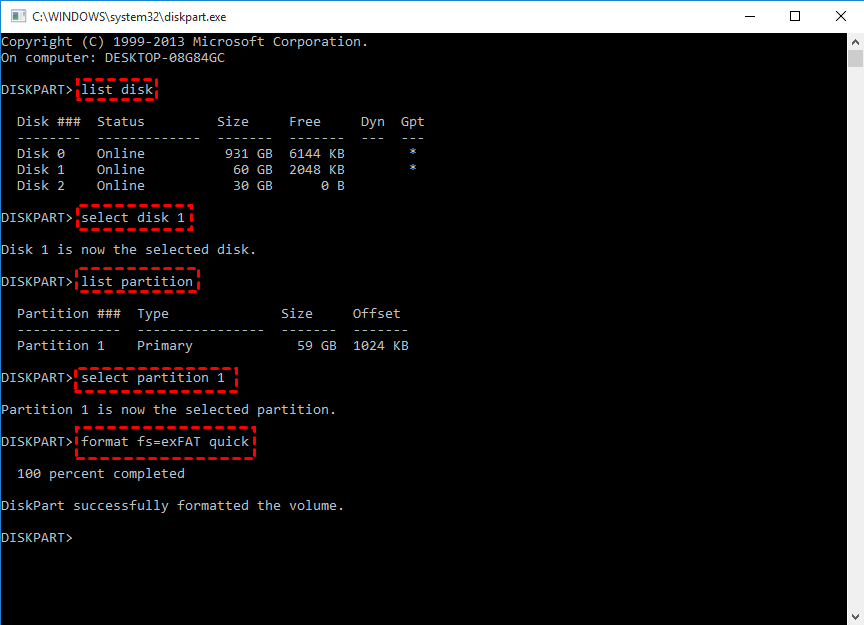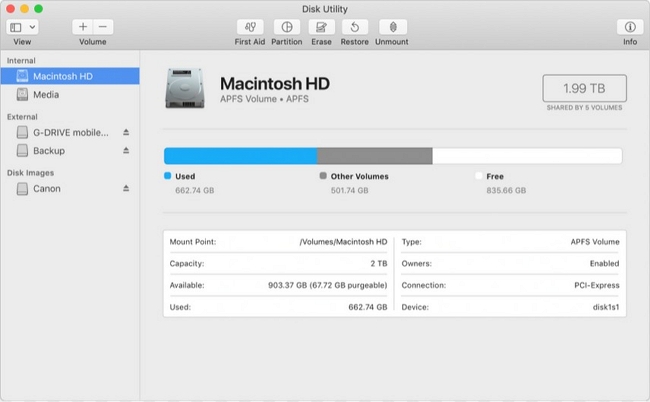

- What usb format for mac and pc mac os#
- What usb format for mac and pc pro#
- What usb format for mac and pc Pc#
- What usb format for mac and pc windows#
Select the format type you wish to use and give the drive a name.Select the drive you wish to format from the list.Next, complete the following steps in Disk Utility To find it quickly, do a search for “Disk Utility” in the spotlight (magnify glass) icon on the upper right side of the screen. To reformat a hard drive or USB stick first open Disk Utility.
What usb format for mac and pc mac os#
Mac OS Extended (Journaled) – Standard MAC only formatįormat Drive Instructions MAC Instructions.
What usb format for mac and pc windows#
ExFAT – Compatible with Windows and Mac Operating Systems.This process only takes a few minutes but will erase all files on the drive so make sure you copy off any files you need before reformatting. To copy files to the drive you must re-format it using a different type of formatting. This is common with new drives which frequently come formatted for Windows computers in the NTFS format, which is not comparable with Mac OS. That’s a long time.If you can’t copy a file to your hard drive it likely isn’t formatted for the operating system you are using.
What usb format for mac and pc pro#
Pro Tip: I’ve been writing about the Mac system since MacOS 9. Those two files? Together they’re 10GB in size, so they’re definitely bigger than FAT32 can handle. Notice that Get Info shows ExFAT, as hoped. Pretty cool.Īnd now you can copy massive files onto the device, as I do in the below: Not only that, but ExFAT is slightly more efficient so we’ve picked up just a smidge of additional space from the flash drive. Notice just below the drive name it shows “ExFAT”. Looks like it’s working – formatting as ExFAT – and once it’s done you’re back here again: Click on “ Erase” to proceed and it’ll go through a variety of steps pretty quickly, ending with this: Ready? Sure you want to proceed and don’t need anything on the drive? That’s really a ridiculous number of options (did you realize that the Mac supported so many file systems?) but the most recent version of MacOS X is built around APFS, Mac OS Extended is the previous generation file system, and at the bottom you can seem “MS-DOS (FAT)” (really FAT32) and “ExFAT”.Ĭhoose “ExFAT”, then come up with a name for your drive as desired too: You’ll now have to choose what file system format to utilize: You can reformat a drive by choosing the drive – note that the one above is in the “External” category, do NOT choose an Internal drive! – then clicking on the “Erase” button off the very top set of icons. And make doubly sure you’ve chosen the correct drive in Disk Utility too: Pick the wrong one and oh, it can be catastrophic! Make sure you don’t need any of the data. Warning: Reformatting will irretrievably delete every single thing on the drive. You can see here that the drive – a Kingston DT Elite 3.0 – has a 32GB capacity (it shows 31.44 because there’s always a little bit of space taken up by the file system structure itself) and while it’s called “Windows 8”, it’s actually in Mac format (as Get Info showed). Click to choose your drive and it’ll look something like this: Make sure there’s nothing on the flash drive you want to keep and launch “Disk Utility” from the Applications > Utilities folder. Pretty common, but completely incomprehensible to a Windows system, whether it’s a swanky Surface Pro or an old clunker tower PC. I’ve highlighted the info on this particular drive: Mac OS Extended (Journaled). Let’s check it out!įirst off, plug in your flash drive and use Get Info to see what kind of file format it has:

There’s another variation on the theme, ExFAT, that offers massive, thousands of terabytes, max file size.įortunately, the Mac Disk Utility program supports ExFAT along with FAT32 so you’re going to be in great shape. Still not that huge for modern systems and I have video files I share with clients that are considerably larger than FAT32 max file size. So almost all FAT file systems are really FAT32, which bumps the max file size up to 4GB.

Problem is, FAT has a hard limit on file sizes because of how it was designed: If you have a file bigger than 32MB you’re out of luck. The most common is “FAT” (which stands for File Allocation Table, not a judgment on the user’s weight!).
What usb format for mac and pc Pc#
Not only can the Mac work with PC drives, though, it can format any drive or storage device to be Windows native too.īut there are additional wrinkles and nuances because Windows computers work with a variety of file system formats too. In fact, when you plug that USB flash drive into your Mac system, it’s quite likely it’s formatted for Windows and you aren’t even aware that the OS is translating file formats invisibly. While Windows computers tend to turn a cold shoulder to the Mac community, Apple has always ensured that interoperability between Mac and Windows is a breeze.


 0 kommentar(er)
0 kommentar(er)
